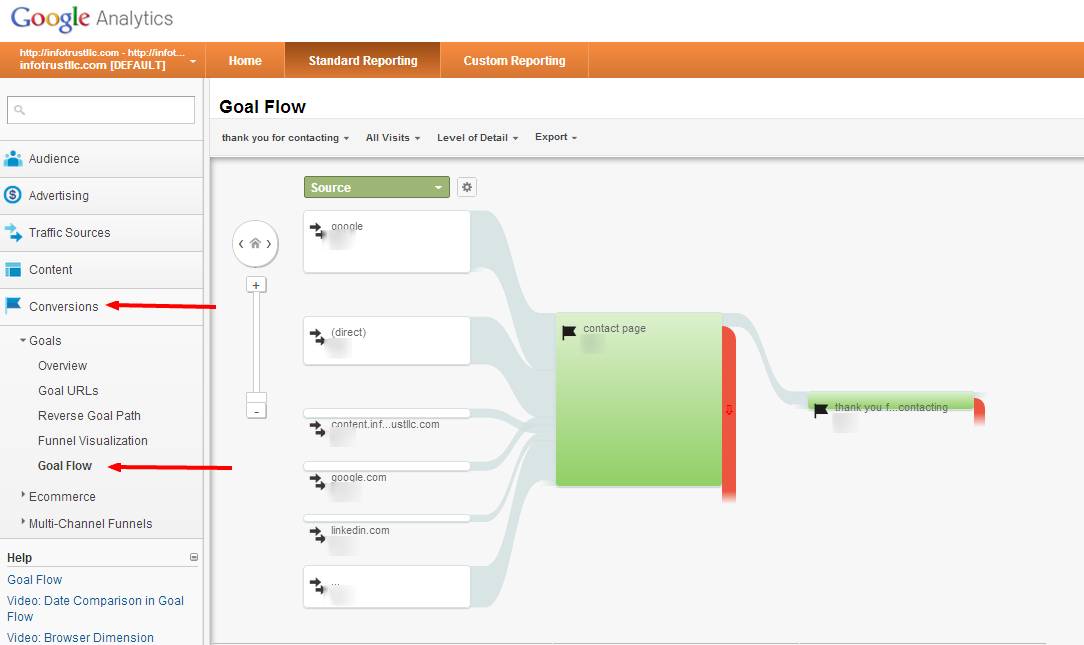Secret Insights on What Data Is Google Analytics Goals Unable to Track
Secret Insights on What Data Is Google Analytics Goals Unable to Track
Blog Article
Discover the Limitations of Google Analytics Goals: Introducing the Data Types That Remain Untrackable
As businesses progressively depend on data-driven decision-making, understanding the restrictions of devices like Google Analytics becomes critical. While Google Analytics Goals offer valuable understandings into individual communications, there exist data types that thwart tracking, presenting obstacles to a thorough understanding of customer behavior. These untrackable data types elevate concerns regarding the accuracy and completeness of the analytics data that companies greatly trust for their electronic techniques. Curious to reveal the surprise dead spots in your information evaluation process?
Incomplete Individual Trip Tracking
Incomplete customer journey tracking within Google Analytics can prevent the capacity to properly analyze individual actions. When the customer trip is not completely tracked, there are spaces in the information that prevent a thorough understanding of exactly how users engage with a website. This lack of understanding can lead to missed opportunities for optimization and improvements to the user experience.
One typical issue with incomplete customer trip monitoring is the inability to see the complete path that users take before completing a goal or leaving the site. Without this details, it is challenging to recognize where individuals may be encountering challenges or friction factors that avoid them from converting. Additionally, insufficient monitoring can obscure the impact of certain marketing efforts or website changes on customer habits.
To address this restriction, it is vital to establish up proper tracking devices within Google Analytics to catch the whole customer journey. This may entail establishing up occasion tracking, objective funnels, or using devices like Google Tag Manager to make certain that no important communications go unrecorded. By acquiring an extensive sight of the user trip, site proprietors can make more informed decisions to enhance customer engagement and drive conversions.
Acknowledgment Difficulties
Navigating with acknowledgment challenges in Google Analytics requires a thorough understanding of exactly how various touchpoints add to the general conversion procedure. Attribution challenges occur from the intricacy of modern customer journeys, where customers engage with numerous networks before transforming.
One usual acknowledgment difficulty is the difficulty in connecting conversions to the correct resource, especially in situations where users connect with several networks before converting. Additionally, cross-device tracking poses another attribution obstacle, as customers frequently change between tools during their trip, making it challenging to track their communications effortlessly.
Offline Conversions
Given the difficulties connected with connecting conversions accurately in online channels, the measurement of offline conversions provides a substantial opportunity for online marketers seeking a more extensive understanding of their consumers' journey. Offline conversions refer to actions that clients absorb the physical world, such as making purchases in brick-and-mortar stores or over the phone, participating in events, or engaging with printed materials - what data is google analytics goals unable to track. These conversions are important for companies that operate both online and offline, as they provide valuable insights right into the efficiency of advertising projects throughout different touchpoints
Tracking offline conversions additional hints typically positioned a considerable obstacle for online marketers, as it was challenging to attach these activities back to specific online communications properly. Nonetheless, with developments in technology, such as the integration of CRM systems, one-of-a-kind identifiers, and coupon codes, services can now Homepage bridge the gap between online and offline data to gain a more holistic sight of consumer behavior. By successfully measuring offline conversions, online marketers can maximize their methods, designate resources extra efficiently, and inevitably enhance the total customer experience.
Cross-Device Monitoring
Cross-device monitoring plays a crucial duty in recognizing the interconnected nature of customers' electronic interactions across multiple tools. In today's omnichannel globe, where users seamlessly switch in between desktop computers, tablets, and mobile phones, tracking their actions across these devices is crucial for online marketers to obtain a detailed view of their client journey.

In addition, personal privacy worries and laws such as GDPR and CCPA have better complicated cross-device monitoring. With customers requiring more control over their information and raised limitations on tracking modern technologies, marketing professionals have to locate privacy-compliant and innovative methods to link individual communications throughout devices.
Dynamic Content Engagement
Recognizing customer interaction with dynamic content is critical in maximizing electronic advertising and marketing methods for enhanced audience communication. Dynamic content refers to site elements that transform based on customer habits, preferences, or various other aspects, using a personalized experience. However, tracking customer communications with dynamic material presents obstacles for typical analytics devices like Google Analytics.
While Google Analytics can track standard interactions like clicks and web page views, it may struggle to catch more nuanced interactions within vibrant content. what data is google analytics goals unable to track. Metrics such as time spent on details vibrant elements, float activities, or interactions within pop-ups are often not conveniently quantifiable utilizing basic monitoring techniques. This limitation impedes marketing professionals' capability to fully grasp just how users are involving with dynamic content and customize their strategies accordingly

Conclusion
To conclude, Google Analytics goals have restrictions in tracking insufficient customer journeys, attributing conversions precisely, capturing offline conversions, tracking cross-device communications, and measuring vibrant content involvement. These restraints highlight the importance of checking out added tracking methods and tools to acquire a more extensive understanding of customer habits and conversions past what Google Analytics can provide.
While Google Analytics Goals deal beneficial understandings click here for info into customer communications, there exist information types that avoid tracking, positioning difficulties to a thorough understanding of customer actions.Insufficient individual journey monitoring within Google Analytics can prevent the ability to accurately evaluate individual habits. When the user trip is not totally tracked, there are gaps in the information that stop a detailed understanding of just how customers engage with a web site.One common issue with incomplete customer trip tracking is the lack of ability to see the complete course that users take before completing an objective or leaving the site. By acquiring an extensive sight of the customer journey, site owners can make more enlightened choices to enhance individual engagement and drive conversions.
Report this page